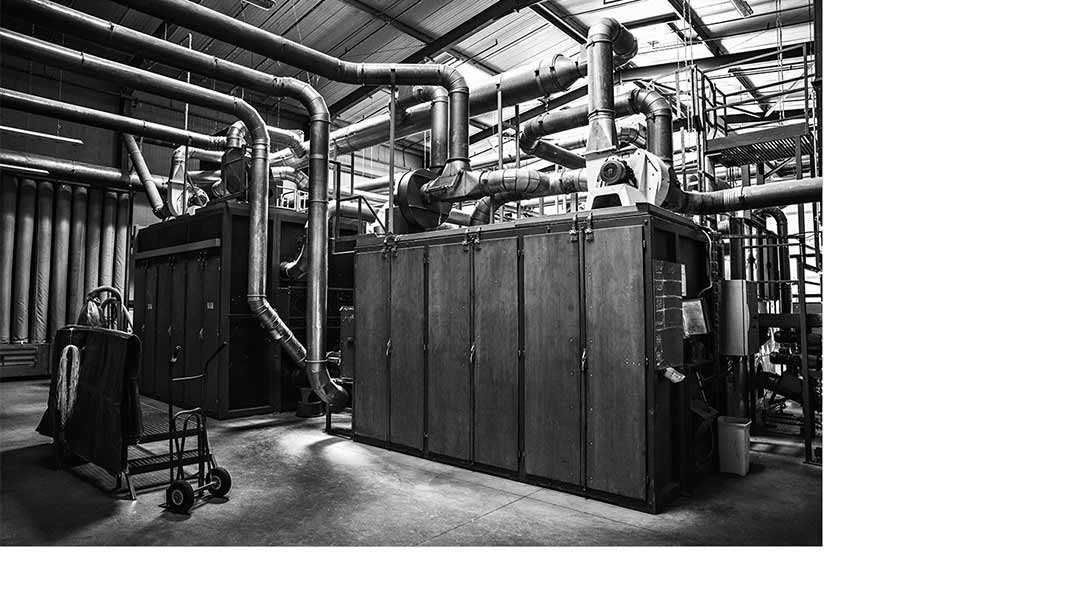BEDDING - ADVICE
We spend one third of our lives sleeping, so when choosing how to spend your nights, it is fundamental to know the basic knowledge of Pyrenex bedding products. Here is a quick review of some essential details.
Feathers or down?
THE NATURAL DUCK AND GOOSE FILLING OF FRANCE
Pyrenex natural filling is composed of goose and duck feathers and down in varying proportions, depending on the use and the desired effect of the finished product. In fact, feathers and down have different physical structures which give them specific properties which can be suited to each person.
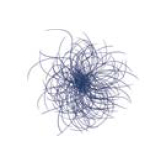
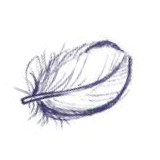
DOWN
This precious material constitutes only 10% of goose and duck plumage. Every particle of down is composed of a shaft around which small fibres push out in all directions. This three-dimensional geometry gives it both flexibility and the capacity to expand, while playing the indispensable role of an insulator as it is able to provide heat by storing a significant volume of air.
Down is supple, voluminous and insulating, making it the ideal filling for comforters, pillows, eiderdowns and sleeping bags. But don't forget: down is a precious material that represents only 10% of the bird's feathers and is destined for top-of-the-range products.
FEATHERS
Feathers have a more organised structure than that of down flakes, with a central stem and offshoots branching out on both sides. Depending on the size, these may be called either feathers or fine feathers. In palmipeds, the feathers have a characteristic contour – that is what gives the spring and density to the products which make use of this material.
Feathers are heavier than down and are used to fill products that the body rests on: pillows, bolsters, cushions, mattress pads. Combined with down, they lend structure and form to comforters and pillows.
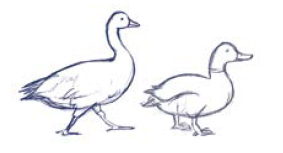
GOOSE OR DUCK DOWN?
As a goose is larger than a duck, goose down generally has more loft than duck down. Goose down filling is therefore lower in weight per m² compared to duck down, but with the same level of thermal comfort. However, thanks to its know-how and experience, Pyrenex has developed duck down which surpasses the characteristics of goose down: the Legend 1859
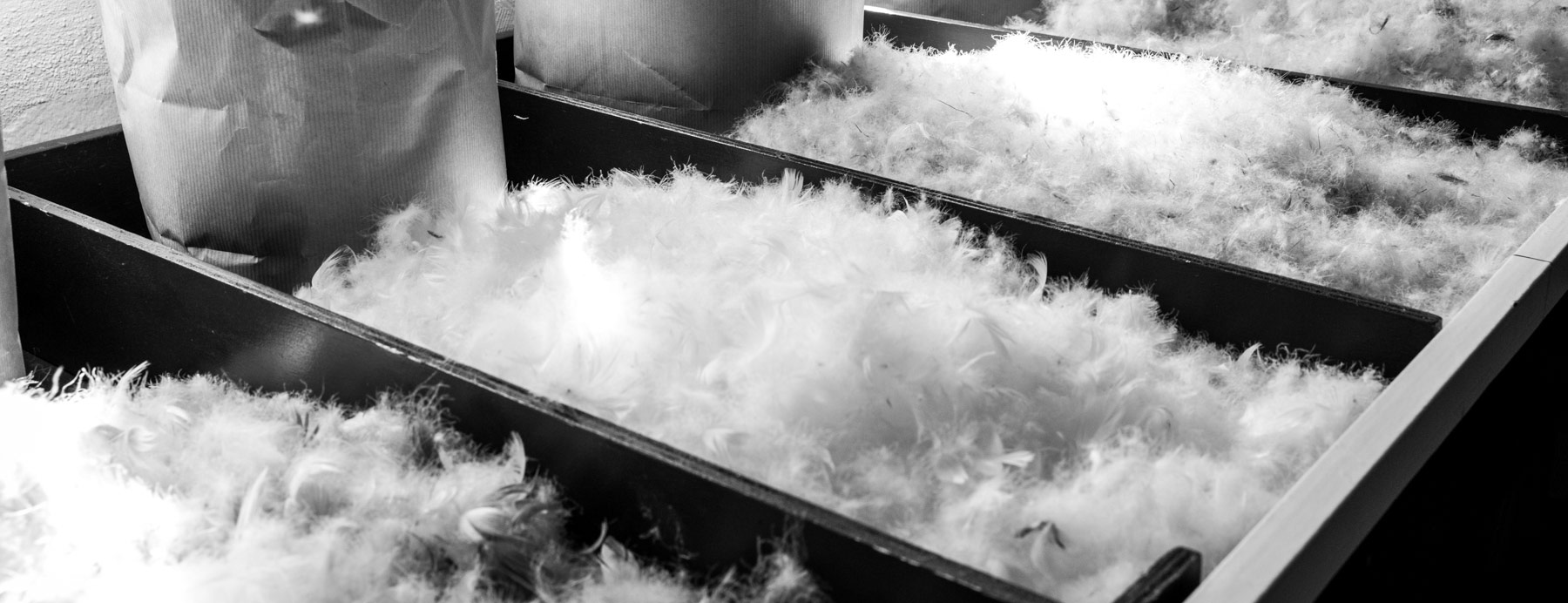
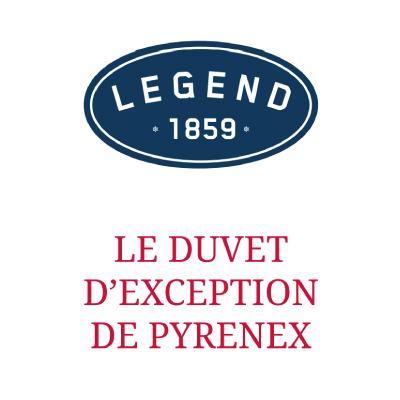
THE LEGEND 1859
Recognised throughout the world for its traditional knowledge and skills, the Pyrenex manufacturing company has been working with goose and duck feathers and down for over 160 years with the same love and the same stringent requirements. Today, Pyrenex is an innovator in the manufacture of this exceptional material: the manufacturing company has slowed time and the yield-production race, and has instead asked its best workers to concentrate their know-how and technology in search of exceptionally pure down. The basic material, essential in this pursuit of excellence, is duck down from the Pyrenees – selected from the most beautiful supplies in South West France. A revolutionary process— marked by precision, care and ‘slow craft’—today allows this ‘cluster of a duck down’ to reach never-before achieved levels of insulation and lightness. Promised to the most beautiful ski jackets or luxurious down jackets, this exceptional down is now offered in the most prestigious Pyrenex duvets and pillows, providing ‘sublime’ comfort and lightness.
Pyrenex feathers and down offer exceptional performance in terms of insulation, lightness and durability. We maintain strict control over our raw materials, selecting only the finest from the best producers in Poitou, Aquitaine and the Pyrenees. The expertise of the Pyrenex teams in our Saint-Sever factory and our commitment to technological development allow us to maintain consistently high quality and impeccable hygiene. From washing and sorting to treatment, each step of the transformation process is painstakingly executed to ensure that Pyrenex remains the international reference for the very best in feathers and duvet.
THERMAL CAPACITY OF FILLING
TOG: The tog is an english unit of measure which measures thermal insulation – that is, the ability to trap air and exchange it quickly.
The high quality of the down, its filling weight in g/m2 and the thinness of the casing are the 3 parameters that will determine the insulation performance of the duvet.

FILL POWER
The strong point of Pyrenex is the fill power of its down – the measurement unit of its ‘loft’ or ‘fluffiness’. Calculated in CUIN (cubic inches), it measures the capacity for a certain filling weight to puff out to a certain volume: the greater the ‘puffed out’ volume, the higher the insulation performance and lightness of the down. Products with fill power greater than 500 are already considered to be of very good quality. However, the exceptional down LEGEND 1859 offered by Pyrenex in 90% down, or 100% down in some products of excellence, boasts of an impressive fill power of 850 cuin.
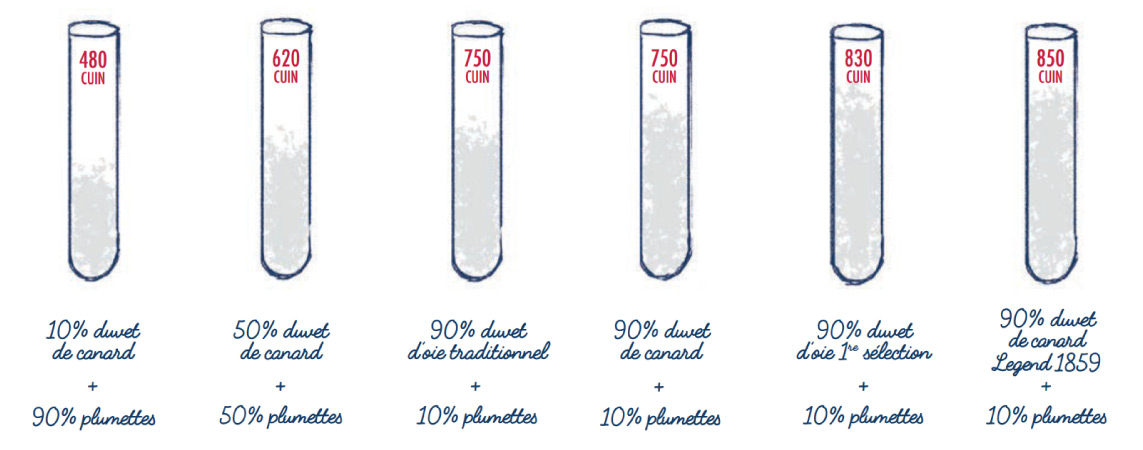
How to choose a duvet?
WHICH DUVET FOR WHICH BED?
The choice of the duvet size depends on your type of bedding and furniture. The ‘drop’ of your duvet should be enough to avoid any entry of cold air. It depends on your body size and your tendency to move around while you sleep. There is a comforter size to match each bed size:

WHICH DUVET FOR WHICH ROOM TEMPERATURE?
Down comforters have properties that synthetic filling cannot match: the natural lightness and thermoregulation of down lends incomparable comfort to bedding items. For example, when your bedroom is cool, the comforter stores more heat than when it is hot.

HOW TO POSITION A DUVET?
There are some basic rules you should know to be sure of positioning the duvet on your bed properly. Contrary to what one may think, the length of the duvet does not necessarily go along the length of the bed. First of all, locate the adjacent label positioned on one side of the duvet. That shows you that this side (or the opposite side) needs to be positioned at the head or foot of the bed!
WHAT'S A FOUR-SEASON DUVET?
At Pyrenex, we developed a line of so-called "four-season" duvets which are combinable together with snaps buttons. By doing so, you have the possibility to associate different duvets with different fillings in order to find the perfect fit to your needs no matter the temperature. You can use them all year long by combining and uncombining them accross the seasons. Of course they can be used individually.
HOW TO COMBINE TWO DUVETS?
After positioning your duvet on the bed, locate the part of the duvet with the female press buttons and the other part with the male press buttons. Overlay the second duvet, ensuring that the part with the male press buttons is positioned above the female press buttons of the first duvet and vice versa.
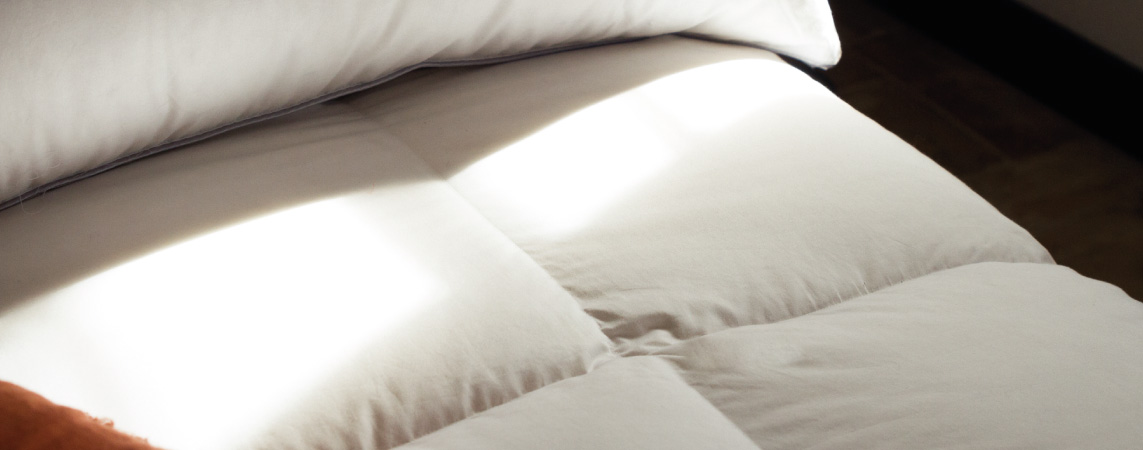
How to choose a pillow?
THE COMFORT OF A PILLOW
Choosing a pillow has always been a very personal choice but your sleeping habits may help to determine the right pillow for you. The right pillow will give your spine, neck and head the best possible alignment.
COMFORT COMES IN A VARIETY OF FORMS
The natural stuffing of Pyrenex pillows combines curved downy feathers and down. Depending on the model, Pyrenex proposes various proportions of down and feathers (various compositions) and different densities which provide various forms of comfort and a wide choice for the sleeper.
REGARDLESS OF COMPOSITION: HOMOGENEOUS SUPPORT
Irrespective of the percentage of feathers and down in the stuffing, one of the intrinsic qualities of natural stuffing is its ability to spread out in the pillow to adopt the shape of the sleeper’s head and neck and thereby provide well balanced support without any pressure point. This is a basic quality which separates it from most other synthetic or natural stuffing. As for the proportions of feathers and down (the composition) and the density which determine the choice of the most suitable item in terms of comfort and support: Down provides exceptional softness while feathers offer springiness.
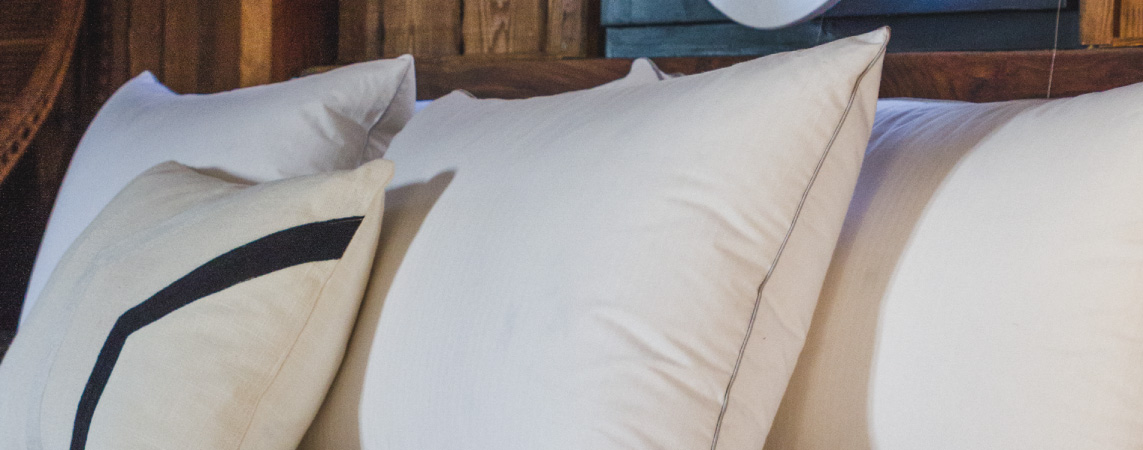
ADJUSTED COMFORT FROM 100% FEATHERS TO 100% DOWN
• From 100% feathers to 30% down/70% feather: you will find that most feathers offer springy comfort
• 50% down / 50% feathers: this strikes the right balance between softness and springiness
• From 70% down: you will note the soft comfort of the pillow
• Between 90% and 100% down: you will experience extraordinary levels of sponginess and softness
THE DENSITY OF THE PILLOW DEFINES ITS SUPPORT
The greater the density of a pillow (which indicates that the weight of its stuffing is greater) the firmer it will be:
• Lowest density: the pillow is flat and provides little and flat support
• Average density: the pillow is bouncy and provides medium support
• High density: the pillow is very bouncy and provides firm support

THE PREFERED SLEEPING POSITION CAN INFLUENCE THE CHOICE OF ADAPTED SUPPORT
• If you tend to sleep on your back or on your side: you will need suitable support and therefore a bouncy model which is stuffed with a flexible or firm form of support.
• For large people or those with broad shoulders who sleep on their side: very bouncy and firm pillows are advised to maintain the best possible position of the head, neck and shoulders throughout the night.
• If you sleep face down : the best support will be provided by a flatter model which therefore has a reduced grammage.
Comfort and support are the two factors that you should consider when you choose your natural pillow for a good night’s sleep! To help you make this decisive choice to guarantee a quality night’s sleep, your store assistant will provide you with the best advice.
Allergies: myth or reality?
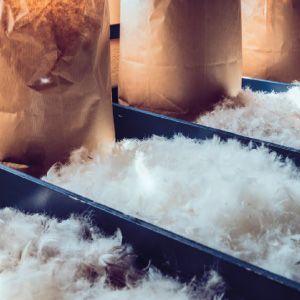
Keratin compounds (such as nails and human hair, or feathers and down) cannot, in and of themselves, bring about an allergy. Possible discomfort can come from several other allergenic agents such as dust or dust mites, if the bedding is not sufficiently aired or cared for properly. In order to guarantee cleanliness and perfect hygiene, the Pyrenex feathers and down undergo several washes before being sterilised in a steriliser at more than 100°. The down thus becomes hypoallergenic. At the end of the process, the final product has reached a very high level of cleanliness. In reality, feather and down filling removes moisture much better than polyester, thus presenting a much less favourable terrain for the development of mites. Furthermore, the very tight type of weaving our cotton casings—initially intended to hermetically contain the down—ensures a natural barrier to mites.
According to recent studies, down also contains eight times less dust mites than polyester filling. The simplest way to limit the risk of allergies is to care for the bedding regularly. Machine-washed and dried, they will be rid of allergenic agents, and the feathers and down will once again regain their fill power.
How to care for my comforter?
CARE
In order for a Pyrenex bedding product to retain all its properties and softness, we indicate the following recommendations:
• Shake it daily so that the filling remains well distributed ;
• Reverse the top and bottom of the duvet every two weeks ;
• On a sunny day, extend it between two chairs or at a window for a few hours to air it out as often as possible; the recommendation is at least three times a year (Avoid hanging it on a clothesline) ;
• Machine wash and dry according to the care instructions provided or entrust it to a professional ;
• Wash your duvet and pillow once or twice a year ;
• Pillows: tumble dry for 30 minutes every two months to retain the loft.
WASHING
A duvet placed in a ‘duvet cover’ does not require frequent washing. If there is an unintended cause compelling you to wash it, it is essential that you follow the washing instructions and, preferably, that you avoid washing it more than once a year. If this is done properly, this annual wash will restore all its lightness and loft.
Washing tips: (refer to the product label)
• Pillows washable in a machine drum of 5 kg ;
• Duvets: in a laundrette with a drum-type of washing machine of 15 kg ;
• In terms of the washing agent, we recommend using a liquid detergent and adhering to the dosage. A liquid detergent is more soluble and will rinse much better. For a duvet with a natural filling, the volume and suppleness should be preserved by using a ‘special wool’ detergent. All our natural duvets come with a dose of soap for 5 washes
• Five or six rinses are necessary.

DRYING
Drying, machine-dry, soft and durable, synthetic or delicate programme. A minimum of four hours. It is essential that your duvet or pillow is completely dry so as to prevent the subsequent growth of mould.
Important : In order to regain the loft of your duvet and pillow when drying, it is essential to place two or three drying balls in the drum of the dryer.
Are my bedding items guaranteed?
All our natural-filling duvets come with a five-year guarantee. All our natural-filling pillows come with a statutory two-year guarantee.



